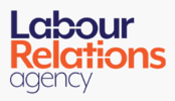Manage absence and sickness
Manage workplace absence and sickness
There are a number of steps you should take to manage unexpected workplace absence and sickness effectively:
- Produce clear written procedures for reporting absence. See absence and sickness policies: what to include.
- Accurately record and monitor absence. See measure and monitor absence and sickness.
- Train managers on how to handle absence.
- Set targets for absence levels.
- Conduct return-to-work interviews after absences, interviewing sensitively to find out if there are underlying causes.
- Provide special equipment if appropriate, eg specialist chairs or chair aids for employees with back problems. Find out about the help available to employers from the Health and Work Support Branch.
- Develop other initiatives to encourage good attendance, eg improvement of working conditions, the introduction of flexible working, provision of counselling and healthcare facilities.
Statement of fitness for work or the fit note
A statement of fitness for work, also known as a fit note is a medical statement that healthcare professionals issue to patients whose health condition affects their ability to work.
Fit note change from 1 July 2022
Since 1 July 2022, other healthcare professionals in addition to doctors are able to sign a fit note. This includes registered nurses, physiotherapists, occupational therapists, and pharmacists. See fit note changes come into effect from 1 July 2022.
A healthcare professional may only issue a fit note after seven calendar days of sickness absence. For sickness absences of seven calendar days or fewer, employees can self-certify.
A statement of fitness for work allows a healthcare professional to advise either that the patient is unfit for work or that they may be fit for work if appropriate support is available eg a phased return to work, altered hours, amended duties, or workplace adaptations.
In the latter case, the healthcare professional may also comment on the functional effects of the patient's health condition and, if appropriate, what changes you, as the patient's employer, could make - in agreement with the employee - to help them get back to work as part of their recovery.
While you don't have to act on the healthcare professional's advice, the statement may help you make simple and practical workplace adjustments to help your staff return to work and reduce unnecessary sickness absences.
Regardless of what a statement says, you must still make reasonable adjustments for disabled employees under the disability provisions in the Disability Discrimination Act 1995.
The Chartered Institute of Personnel and Development (CIPD) has a number of guides, factsheets and Q&As on absence management.
- Equality Commission Employer Helpline028 90 500 600
